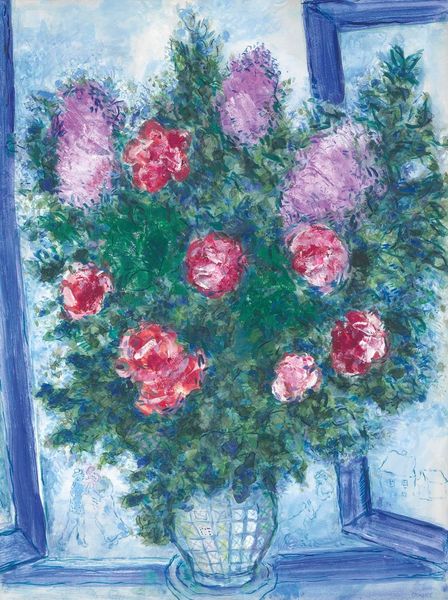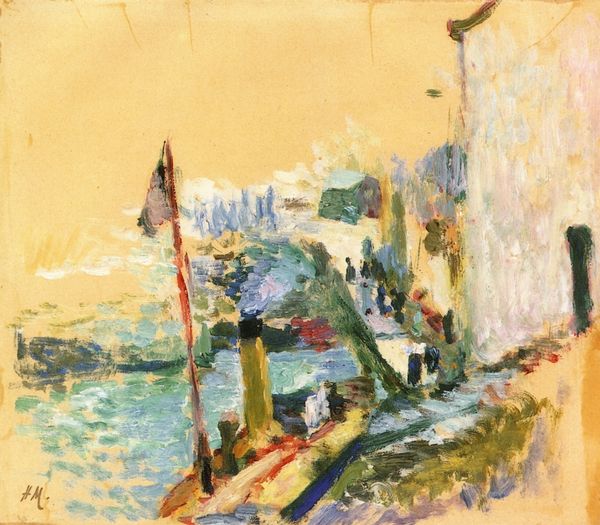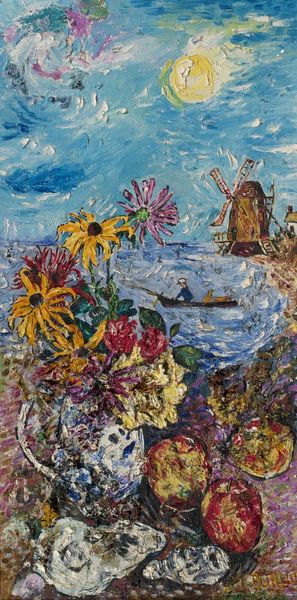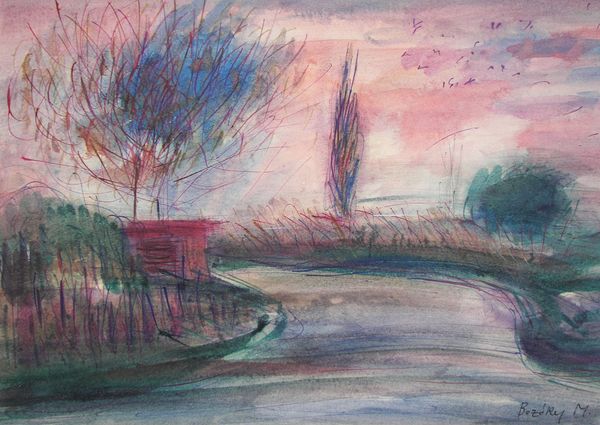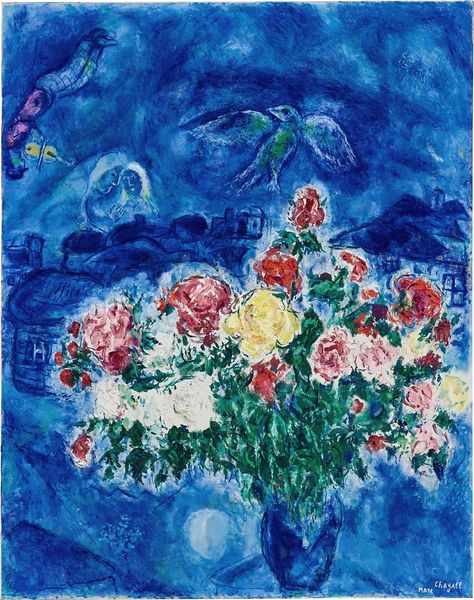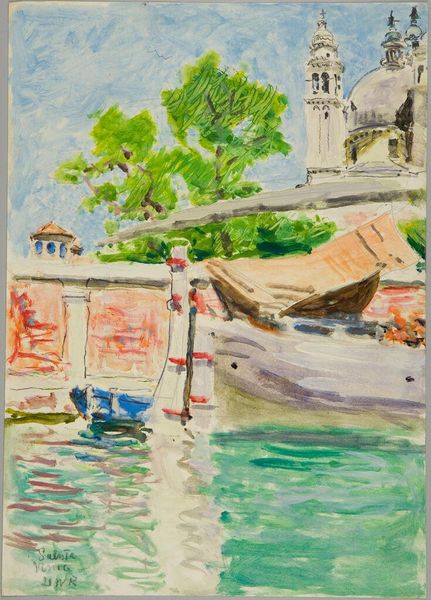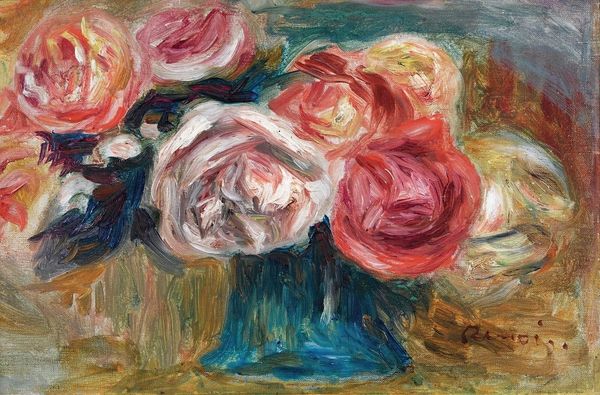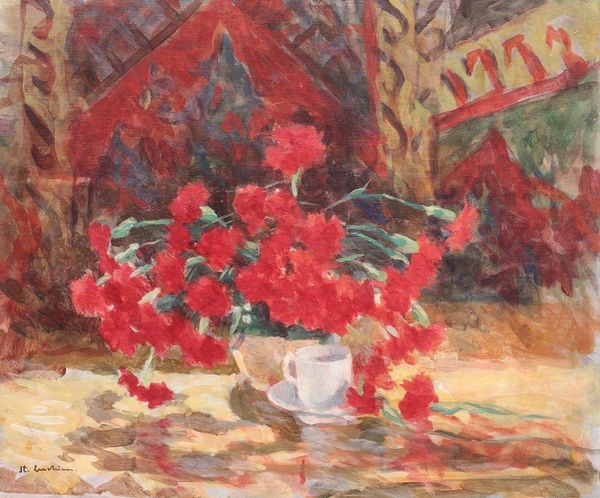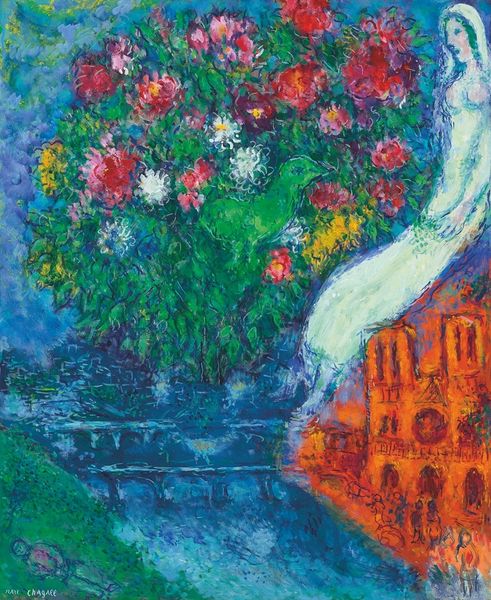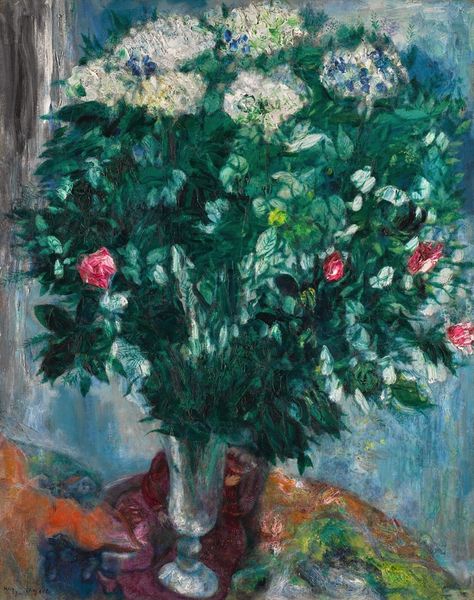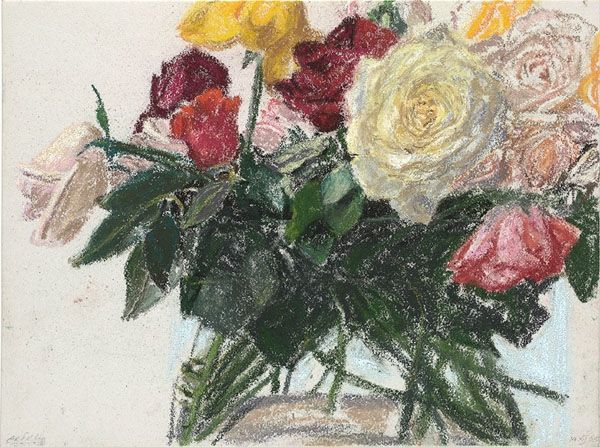
Copyright: Modern Artists: Artvee
Curator: Up next is Marc Chagall’s "Poros" from 1954, an intriguing expressionist watercolor painting. Editor: It has such a dreamy, ethereal quality. The layers of muted blues and greens give the scene an almost otherworldly feel. The sketchy quality adds to its lightness, as if it could all float away at any moment. Curator: Chagall painted this at a time when the influx of Eastern European artists were being more recognized as having significantly impacted Modernism. What strikes me is how he balances depicting an identifiable locale with what you observe, a palpable sense of his own emotional landscape. Editor: Yes, there is something almost improvisational about his technique. He juxtaposes those delicate brushstrokes, particularly in the water, against harder outlines, most notably with that large boat hull in the foreground. Note how the colors reflect in both water and sky. There's a beautiful correspondence of form happening throughout. Curator: And the composition, layering objects within a landscape, seems very intentional too. In terms of imagery, he appears to create a nostalgic tableau. Note that even at this time he returns to familiar motifs present throughout his entire oeuvre—boats and figures that evoke transit. The perspective feels purposefully distorted; you get a sense of simultaneity and compressed narrative. It could reference diaspora and the concept of uprootedness. Editor: That blend of dreamlike figuration with realistic details like the architecture allows Chagall to build visual connections, both structural and emotional. The flowers, too, in the left of the painting—they remind me of looking in a shop window. Curator: Looking closer, one might consider this piece as emblematic of a moment in postwar art where artists grappled with representing lived experience in a rapidly shifting world. The art market increasingly supported new forms of subjectivity, so perhaps Chagall was reflecting on the social realities around him. Editor: Seeing it this way gives me pause to think more on what could almost be considered abstract, like the city in the distance—there's also a real tension in what the elements are doing formally, too. I am fascinated by the perspective from which it is rendered! Curator: It gives us much to think about, formally and historically. Editor: Indeed, and a reminder that these elements don't exist separately but work to deepen the whole!
Comments
No comments
Be the first to comment and join the conversation on the ultimate creative platform.

